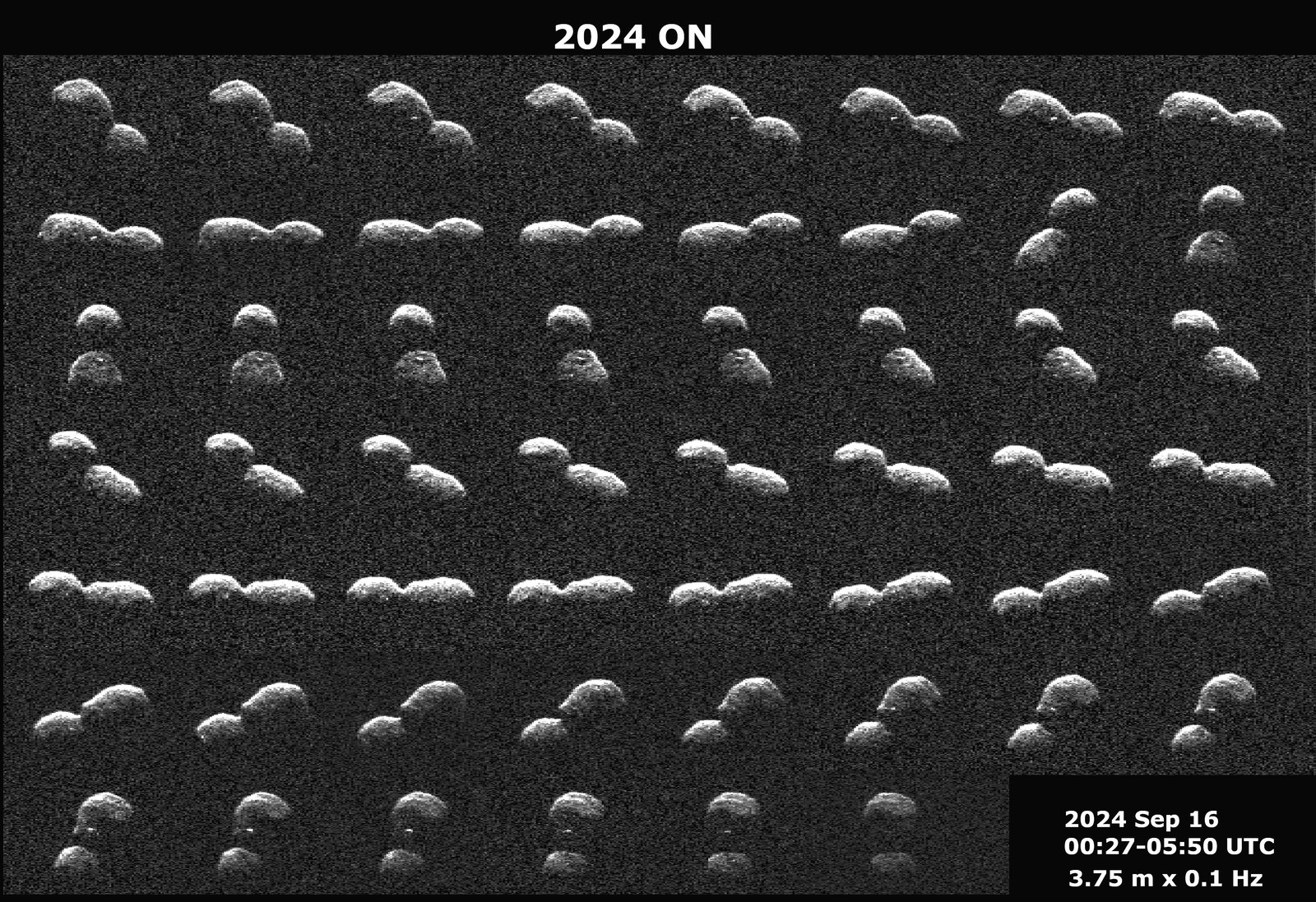NASA has captured radar images of a newly discovered, potentially hazardous asteroid as it tumbled towards its closest approach with the Earth.
On July 27, the NASA-funded Asteroid Terrestrial-impact Last Alert System (ATLAS) on Mauna Loa in Hawai’i spotted a relatively large asteroid heading for a close approach with our planet. NASA keeps a close eye on potentially hazardous asteroids, and took as many radar observations of it as possible as it headed in our direction.
At its closest approach on September 17, the object passed at a distance of about 0.00668 AU, with 1 AU being the distance between the Earth and the Sun. That sounds pretty close, and it is – it’s about 2.6 times the distance from the Earth to the Moon, or about 1 million kilometers (620,000 miles).
Named 2024 ON after the year and time of its discovery, radar images taken on September 16 by the Goldstone Solar System Radar Group show that the asteroid is a contact binary, where two objects have been drawn together slowly by gravity to form something looking like a space snowman.
The asteroid is pretty sizeable, with radar images suggesting it is about 350 meters (1,150 feet) long, with one of the “lobes” separated by a joined neck. Looking at the asteroid, astronomers were able to see features on its surface larger than 3.75 meters (12.3 feet), and by observing its path over about 6 hours were able to predict its future orbit.

The asteroid was imaged on September 16.
Image credit: NASA/JPL-Caltech
While the asteroid’s orbit sends it between Earth and Jupiter, it does not look to pose any threat to either.
“This asteroid is classified as potentially hazardous, but it does not pose a hazard to Earth for the foreseeable future,” NASA explained in a statement. “These Goldstone measurements have allowed scientists to greatly reduce the uncertainties in the asteroid’s distance from Earth and in its future motion for many decades.”
The next close approach will take place in 2035, when the object is predicted to pass at a distance of around 0.32697 AU. In the next 100 years, orbital predictions show that it will not approach any closer than it did earlier this month, meaning you are free to enjoy pictures of the peanut asteroid without worrying about a Deep Impact situation.
Source Link: NASA Radar Captures Potentially Hazardous Asteroid During Close Encounter With Earth